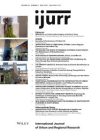How to rid railway stations of the marginalized people who congregate in them? This is the problem faced by railway companies which are seeking to maximize the commercial drawing power of their spaces. The limitations of a strictly repressive policy are prompting railway companies to fund non‐profit community‐based organizations to carry out social policies aimed at the marginalized. Based on two studies in the railway stations of Lyon and Milan, the article analyses how this strategy was implemented. Our analysis involves differentiating our work from two hypotheses: the irenic hypothesis, which sets social policies in opposition to security policies, and the malefic hypothesis, which equates social policies with security policies. The work of the non‐profit community‐based organizations shows that the boundary between social policy and security policy is a tenuous one, since the principal aim is to disperse marginalized people and move them away from the station. Control of marginalized people is based on the use of incentive structures rather than on coercion. The community organizations also have to retain control of their philanthropic legitimacy, which they are selling to the railway companies, but which they are also putting at risk. Focusing on the agency of the actors allows us to avoid both an irenic analysis (in which ‘human’ and ‘just’ social policies come to the aid of the marginalized) and a malefic analysis (in which social policies are merely security policies in disguise).
Details
Written by:
FRANÇOIS BONNET
Digital Object Identifier (DOI)
10.1111/j.1468-2427.2009.00920.x
About DOI
Read full article as PDF
Read full article as HTML
See the references for this article
